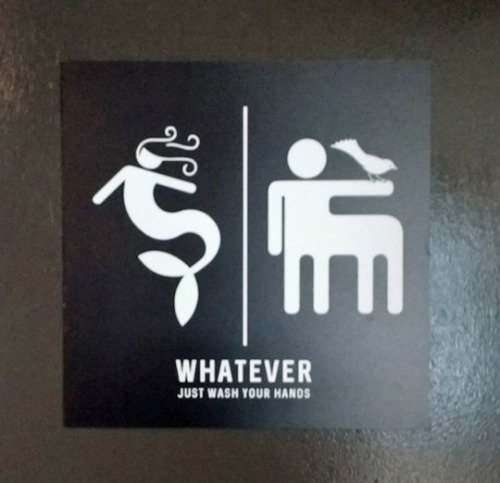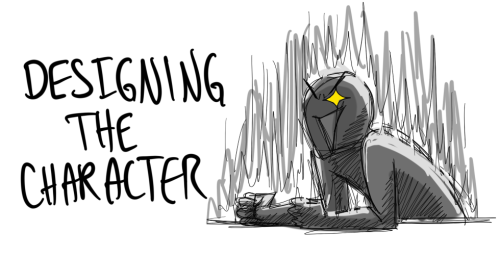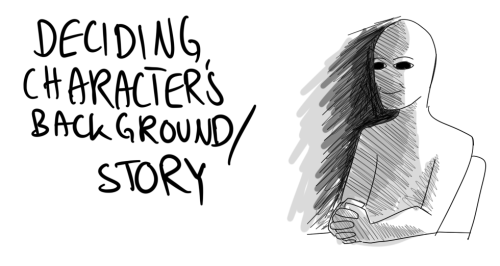Echozeta - Untitled

More Posts from Echozeta and Others

“I think [gender] doesn’t matter for your occupation. Any job that a man can do a woman can do also. Sometimes even better.“


This works for me. (via chapmanchapman)

In case you missed it: DNA testing recently provided more evidence that the tomb of a high-rank viking warrior – replete with war horses, weapons, and strategy games – was that of a woman.
Land is Sliding, Tell Us Where!
Summer in the northern hemisphere brings monsoon season, causing heavy rains and flooding that trigger landslides. Next time you see a landslide in the news, online, or in your neighborhood, submit it to our citizen science project Landslide Reporter to build the largest open global landslide catalog and help us and the public learn more about when and where they occur.
Rainfall is the most common cause of landslides.
After a storm, the soil and rock on a slope can become saturated with water and begin to slide downwards, posing a danger to people and destroying roads, houses and access to electricity and water supplies.

We have been monitoring rainfall from space for decades.
Orbiting the Earth right now, the Global Precipitation Measurement (GPM) mission is a group of 10 satellites that measure rain, snow, sleet and other precipitation worldwide every three hours. This data tells us where and when heavy rain is falling and if it could lead to disasters.

What can rainfall data tell us about landslides?
We’re using GPM data to understand where and when landslides are happening. A global landslide model uses information about the environment and rainfall to anticipate where landslides are likely to happen anytime around the world every three hours.

To improve the global landslide model and other landslide research, NASA is looking for citizen scientists like you!
If you find a landslide reported online or in your neighborhood, you can provide the event details in Landslide Reporter, our citizen science project.

Your detailed reports are added into an open global landslide inventory available at Landslide Viewer. We use citizen science contributions along with other landslide data to check our prediction model so we can have a better picture of how rainfall, slope steepness, forest cover, and geology can trigger a landslide.

Because the data is open, anyone can use the data for research or response.
When you report a landslide, you improve our collection of landslide data for everyone.
Help support landslide efforts worldwide by contributing to Landslide Reporter, and you can help inform decisions that could save lives and property today! Learn more about the project at https://landslides.nasa.gov. You can also follow the project on Twitter and Facebook.
Make sure to follow us on Tumblr for your regular dose of space: http://nasa.tumblr.com.

“I think it’s silly to categorize people as either having an analytical brain or a creative brain. Creativity is needed all the time in the lab to think of new solutions and to visualize problems in different ways. And in the dance world, being analytical allows you to stretch the limits of your physical abilities while finding new, innovative forms of movement.”





the suffering never ends

What exactly is a sun eclipse? Will I be able to see it and if so when from the Netherlands?
The solar eclipse is when the moon is directly in front of the Sun and creates a shadow on the Earth. They happen about once every 18 months. I don’t believe that you’ll be able to see this eclipse from the Netherlands. I think the next one to be in Europe is in 2026. There’s one in Chillie and Argentia in 2019 and another in Antartica in 2021.










-
 mistreeusadults reblogged this · 4 years ago
mistreeusadults reblogged this · 4 years ago -
 blaircollegeplanning liked this · 6 years ago
blaircollegeplanning liked this · 6 years ago -
 captain-cargoshorts liked this · 6 years ago
captain-cargoshorts liked this · 6 years ago -
 elsajeni reblogged this · 6 years ago
elsajeni reblogged this · 6 years ago -
 thetimemoves liked this · 6 years ago
thetimemoves liked this · 6 years ago -
 clevermanka reblogged this · 6 years ago
clevermanka reblogged this · 6 years ago -
 kittykat5742 liked this · 6 years ago
kittykat5742 liked this · 6 years ago -
 sweetlyminiaturesublime reblogged this · 6 years ago
sweetlyminiaturesublime reblogged this · 6 years ago -
 sweetlyminiaturesublime liked this · 6 years ago
sweetlyminiaturesublime liked this · 6 years ago -
 potofhoneypieceofstardust liked this · 6 years ago
potofhoneypieceofstardust liked this · 6 years ago -
 dilyndoesit liked this · 6 years ago
dilyndoesit liked this · 6 years ago -
 fili-gremlin liked this · 6 years ago
fili-gremlin liked this · 6 years ago -
 ladyoftheforestrain liked this · 6 years ago
ladyoftheforestrain liked this · 6 years ago -
 mymetaphorwasdrawnfrombees reblogged this · 6 years ago
mymetaphorwasdrawnfrombees reblogged this · 6 years ago -
 mymetaphorwasdrawnfrombees liked this · 6 years ago
mymetaphorwasdrawnfrombees liked this · 6 years ago -
 balladweave liked this · 6 years ago
balladweave liked this · 6 years ago -
 teeth-whore liked this · 6 years ago
teeth-whore liked this · 6 years ago -
 misachi reblogged this · 6 years ago
misachi reblogged this · 6 years ago -
 clonesdreamgirl reblogged this · 6 years ago
clonesdreamgirl reblogged this · 6 years ago -
 igothurtdoingsafetydance reblogged this · 6 years ago
igothurtdoingsafetydance reblogged this · 6 years ago -
 igothurtdoingsafetydance liked this · 6 years ago
igothurtdoingsafetydance liked this · 6 years ago -
 dontfindme625 liked this · 6 years ago
dontfindme625 liked this · 6 years ago -
 darnath liked this · 6 years ago
darnath liked this · 6 years ago -
 possiblythreefourthspeahen reblogged this · 6 years ago
possiblythreefourthspeahen reblogged this · 6 years ago -
 somebodylost-chan liked this · 6 years ago
somebodylost-chan liked this · 6 years ago -
 tjwock reblogged this · 6 years ago
tjwock reblogged this · 6 years ago -
 weirdnoisen reblogged this · 6 years ago
weirdnoisen reblogged this · 6 years ago -
 weirdnoisen liked this · 6 years ago
weirdnoisen liked this · 6 years ago -
 lostinhistory reblogged this · 6 years ago
lostinhistory reblogged this · 6 years ago -
 ultra-moomeow liked this · 6 years ago
ultra-moomeow liked this · 6 years ago -
 schmoosey reblogged this · 6 years ago
schmoosey reblogged this · 6 years ago -
 nfbgt156 liked this · 6 years ago
nfbgt156 liked this · 6 years ago -
 lady-halibuts-chambers liked this · 6 years ago
lady-halibuts-chambers liked this · 6 years ago -
 ofcoffeeanddonuts reblogged this · 6 years ago
ofcoffeeanddonuts reblogged this · 6 years ago -
 ofcoffeeanddonuts liked this · 6 years ago
ofcoffeeanddonuts liked this · 6 years ago -
 frozenprocedural liked this · 6 years ago
frozenprocedural liked this · 6 years ago -
 frozenprocedural reblogged this · 6 years ago
frozenprocedural reblogged this · 6 years ago -
 kuwaneko reblogged this · 6 years ago
kuwaneko reblogged this · 6 years ago -
 strawberry-louis-forever liked this · 6 years ago
strawberry-louis-forever liked this · 6 years ago